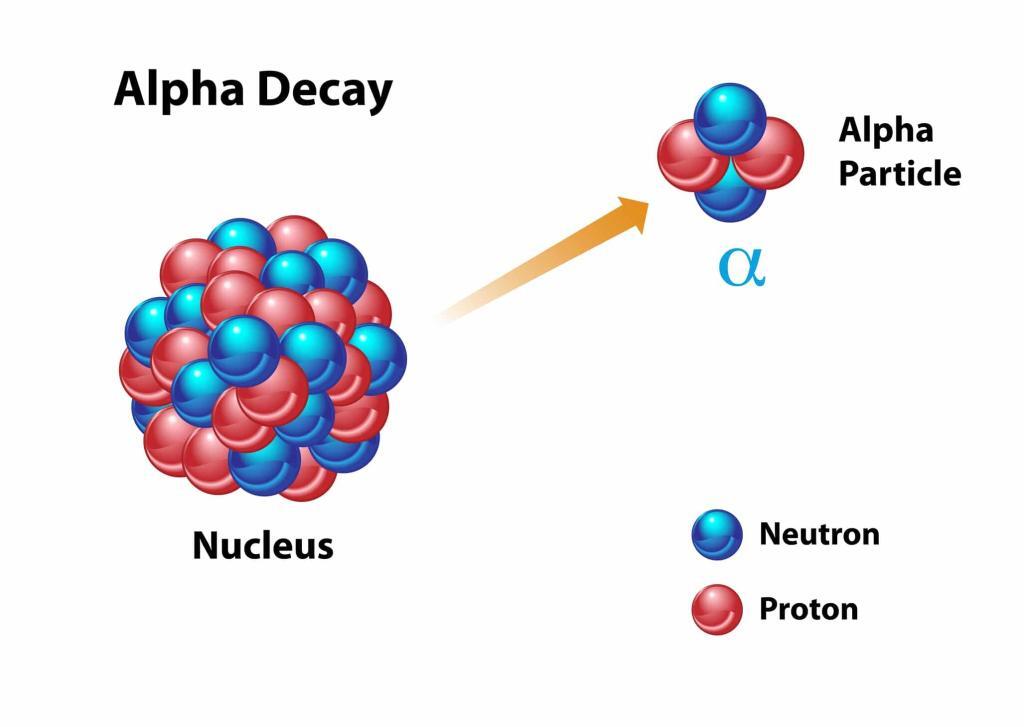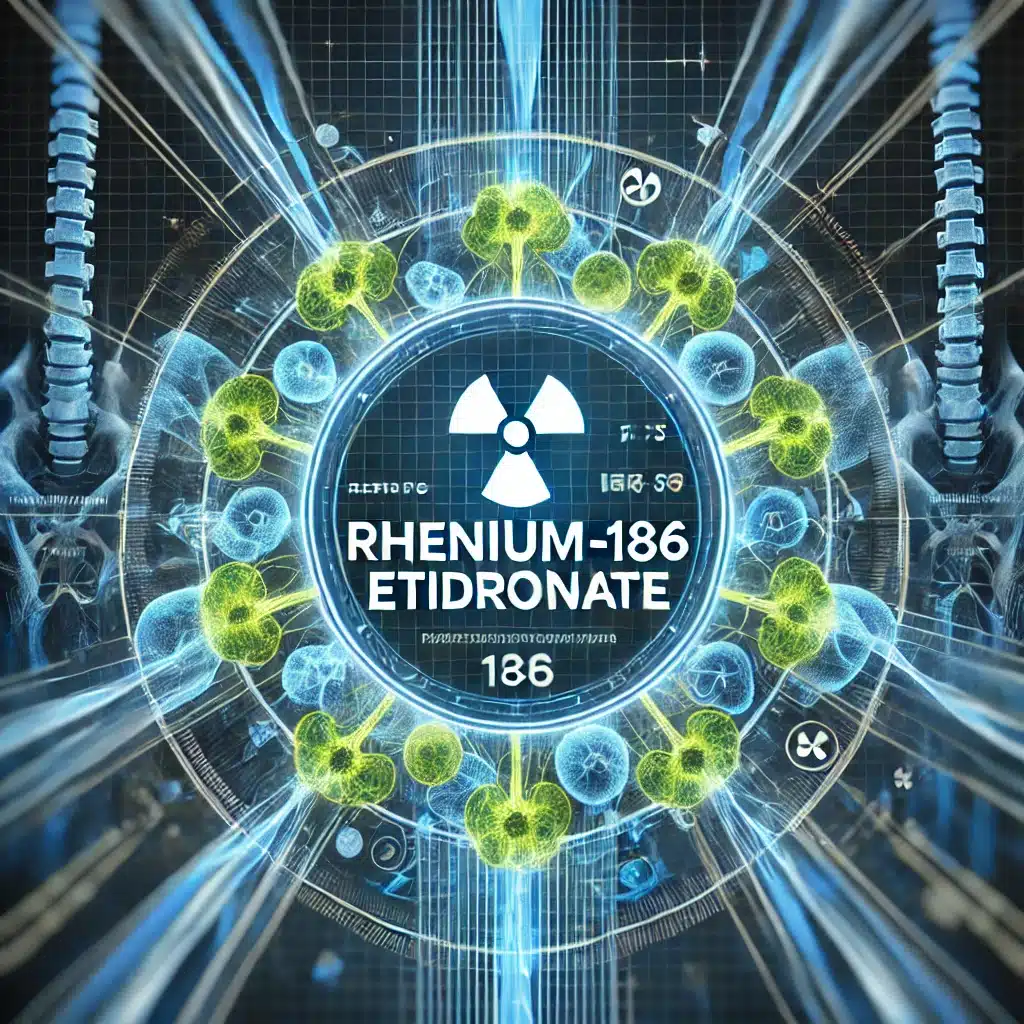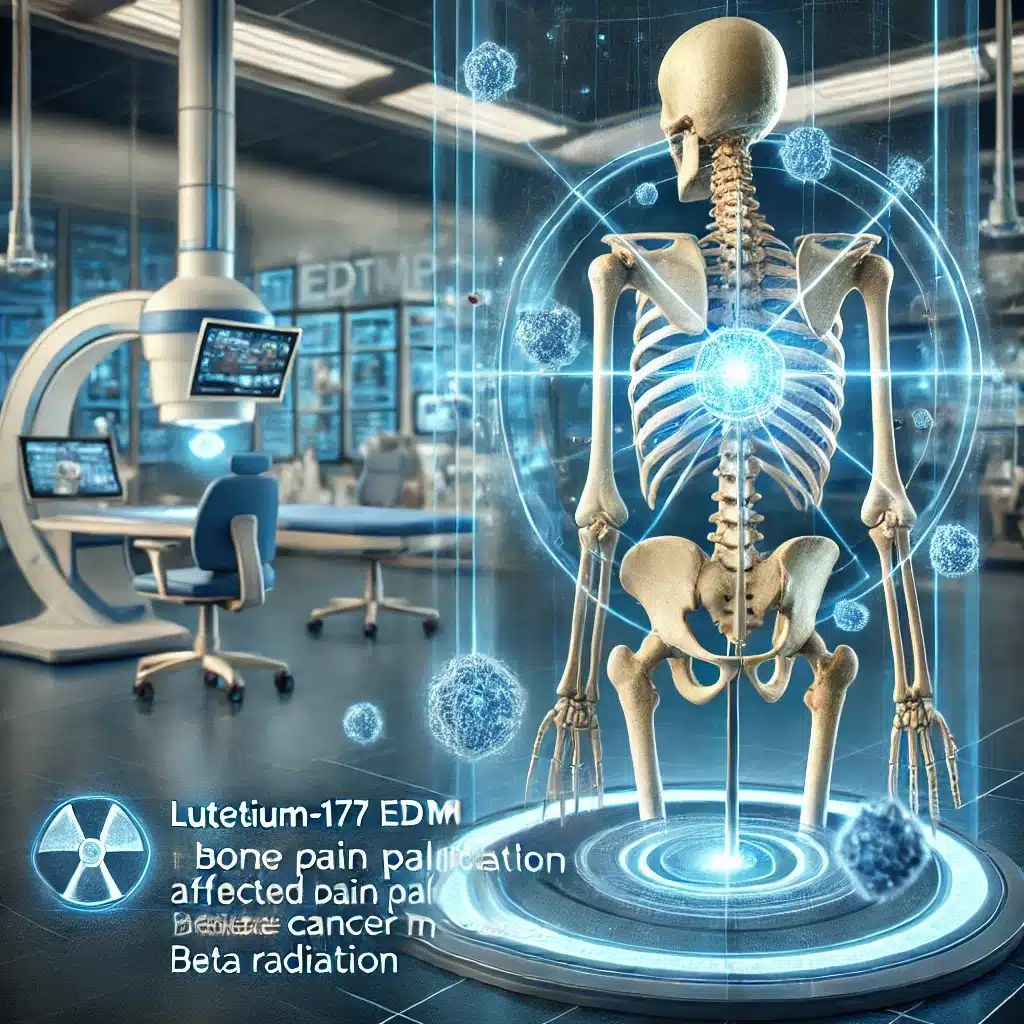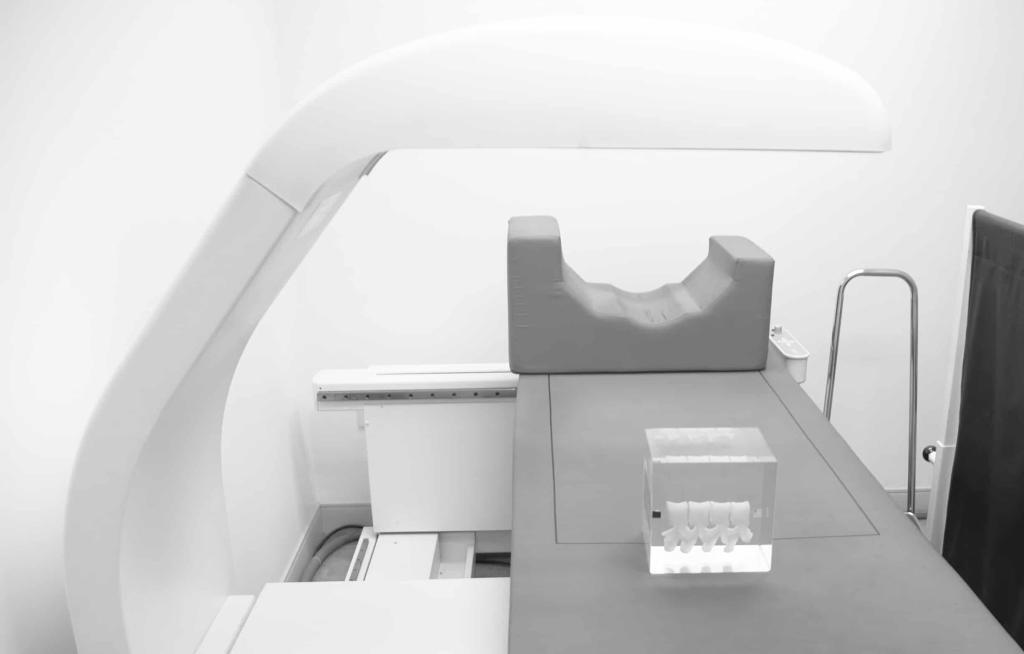Bone Seeking Radiopharmaceuticals
Bone-seeking radiopharmaceuticals represent a critical area in nuclear medicine, particularly in the management of metastatic bone diseases and specific non-malignant bone conditions. These radiopharmaceuticals are uniquely designed to target and bind to bone tissues, offering both therapeutic and diagnostic benefits.
The primary application of bone-seeking radiopharmaceuticals is in the treatment of painful bone metastases commonly associated with cancers of the prostate, breast, and lungs. These metastases can lead to significant morbidity, including pain, fractures, and hypercalcemia, profoundly affecting the quality of life. Radiopharmaceuticals such as strontium-89, samarium-153-lexidronam, and radium-223 are utilised for their palliative effects in alleviating pain. They work by emitting beta radiation, which is effective in destroying cancer cells due to its short penetration depth, minimising damage to surrounding healthy tissues.
Radium-223 dichloride, for example, is a relatively new agent that emits alpha particles known for their high energy and limited penetration range. Thus, it provides a potent therapeutic effect while sparing much of the nearby healthy bone marrow. This selective radiation destroys cancerous bone cells while minimising exposure to the rest of the body. Radium-223 has been shown to not only reduce pain but also extend survival in patients with castration-resistant prostate cancer and symptomatic bone metastases.
Diagnostic applications of bone-seeking radiopharmaceuticals also play a pivotal role. Technetium-99m-labelled phosphonates, for example, are widely used in bone scintigraphy to detect bone metastases, fractures, infections, and other bone disorders. These agents are preferred for their effective imaging properties, rapid bone uptake, and favourable excretion profile, which provide clear and detailed bone images.
The mechanism of action of these radiopharmaceuticals involves their affinity for bone mineral—particularly at sites of increased bone turnover, which is characteristic of both malignant and certain benign bone diseases. Upon injection, these agents rapidly localise to bone tissues, where they emit radiation that can be detected by imaging devices to diagnose or monitor therapeutically to treat bone lesions.
Even though their benefits are great, using bone-seeking radiopharmaceuticals requires careful consideration of potential risks and side effects, such as bone marrow suppression and radiotoxicity. Patients need thorough evaluation and monitoring to optimise outcomes and minimise complications. Moreover, ongoing research and development are enhancing these treatments’ efficacy, safety, and specificity, potentially offering more targeted therapies with fewer side effects in the future.
In conclusion, bone-seeking radiopharmaceuticals are indispensable in nuclear medicine. They provide essential diagnostic insights and therapeutic interventions in bone-related ailments. Their continued development and integration into clinical protocols hold the promise of improved patient outcomes in oncology and beyond.
You are here:
home » Bone Seeking Radiopharmaceuticals














